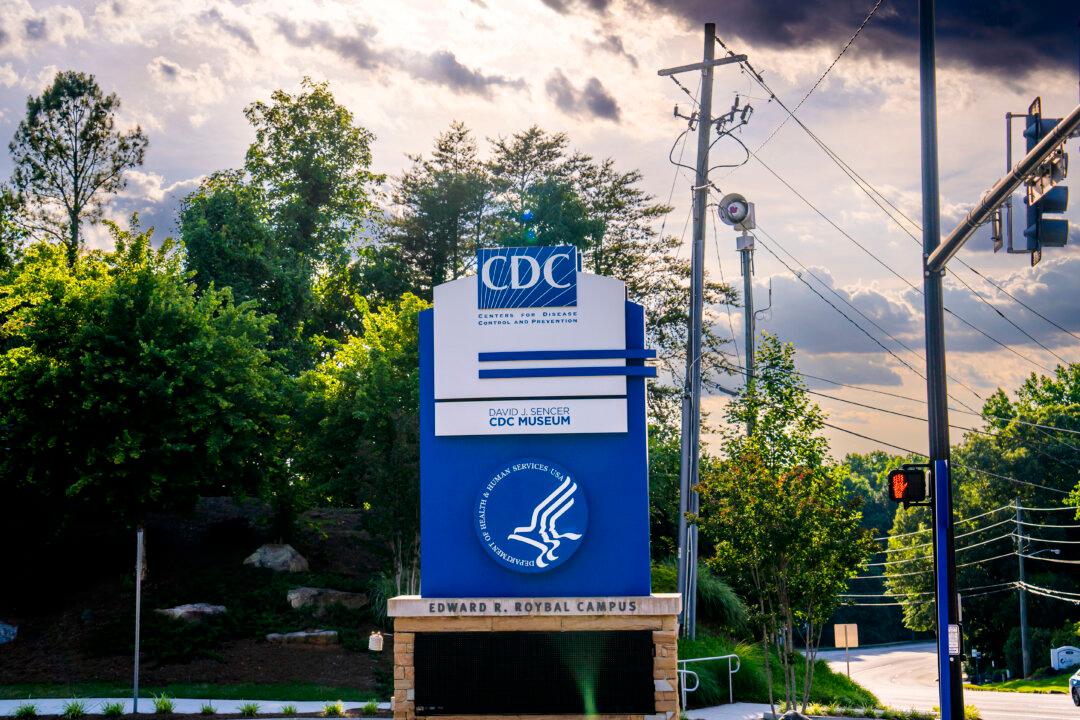Just as in the past, the CDC is again ignoring science, apparently.
It appears the gravy-train for the Big Pharma's (and friends) vaccine bonanza must be restarted to keep the money transfer going, whereby taxpayer monies are given to them, ensuring historic profits are secured for a while longer, no matter the injuries/deaths suffered by the vaccinated.
Including June 27, 2024 the US injected 2.21 Billion doses, at $130 for each dose (injection) we are talking about some serious money ($287.3 Billion). Even, if now, fewer people will opt to be vaccinated, it will still be very, very profitable.
https://ourworldindata.org/grapher/cumulative-covid-vaccinations

"The Centers for Disease Control and Prevention (CDC) headquarters in Atlanta, Ga., on May 21, 2024. (Madalina Vasiliu/The Epoch Times)"
With just a little research we learn, these vaccines of the past,
- did not prevent the infection of others.
- are less than effective and the risk outweighs the benefits.
- may cause heart muscle damage in the young.
- have many serious side effects, including 'long COVID'.
- resulted in more serious infections by the vaccinated than the unvaccinated experienced.
- resulted in overall poor health in many.
- degraded the innate immune response.
- damaged organs in some.
- have killed some outright.
https://covid19criticalcare.com/?s=covid+side-reffects&id=6377
Many other sources echo similar results.
Considering that past vaccine promises were not realized, what makes one think that these new promises for the latest vaccine versions are any better? The technology is the same most likely (mRNA).
"The U.S. Centers for Disease Control and Prevention (CDC) on June 27 recommended forthcoming COVID-19 vaccines for virtually all Americans.
“CDC recommends everyone ages 6 months and older receive an updated 2024-2025 COVID-19 vaccine to protect against the potentially serious outcomes of COVID-19 this fall and winter whether or not they have ever previously been vaccinated with a COVID-19 vaccine,” the agency said in a statement.
U.S. Food and Drug Administration officials, acting on advice from their advisers, recently directed vaccine manufacturers to produce COVID-19 vaccines with updated formulations.
Updated vaccines from Pfizer and Moderna will target the KP.2 variant, while an updated shot from Novavax will target the JN.1 variant.
The updated formulations are expected to be available in September.
CDC advisers earlier Thursday unanimously advised the CDC to recommend the forthcoming vaccines to virtually all Americans, even though no clinical efficacy or safety data are available for them.
Data from animal testing suggest that the vaccines trigger higher levels of antibodies than the shots currently available, manufacturers said previously.
CDC advisers considered a risk-based recommendation that would only say certain groups receive one of the vaccines but ultimately opted for what is known as a universal recommendation.
Dr. Jamie Loehr, one of the members, said before the vote that the cost-effectiveness of vaccinating young people, who are generally at little risk from COVID-19, had him leaning towards a risk-based approach. He changed his mind, though, after listening to a presentation from a CDC researcher.
Dr. Denise Jamieson, another member, said that members should not “get too caught up in cost-effectiveness currently.” She said, “If we compare it to other vaccine-preventable diseases it seems like a really good investment.”
Each dose of a new shot could cost up to $130, according to estimates presented during the meeting.
Pooled effectiveness estimates from studies of the currently available vaccines, which target the XBB strain, and the last slate of shots, which were bivalent, found that effectiveness against hospitalization due to COVID-19 was below 50 percent, the original threshold laid out by regulators.
Researchers with the CDC and other institutions have also found the protection wanes over time, one reason U.S. officials have turned the COVID-19 vaccine model into a once-a-year update similar to the influenza vaccination program.
Many Americans took the original COVID-19 vaccines but most have opted against receiving the newer shots. As of May 11, just 14.4 percent of children and 22.5 percent of adults have received one of the currently available COVID-19 vaccines, according to CDC surveys, which also found that many doctors have stopped recommending the shots because they’re focused on promoting other vaccines and worry recommending COVID-19 vaccination could increase hesitancy among patients to receiving the other vaccines.
Experts said in Thursday’s meeting that the message needs to be that people need another shot.
“We have to keep saying that over and over and over again—you need this year’s vaccine to be protected against this year’s strain of the virus,” Carol Hayes, who represents the American College of Nurse-Midwives as a liaison to the CDC panel, said during the session.
The CDC estimated that up to 116,000 hospitalizations from COVID-19 will be prevented over the next year with universal vaccine recommendations, assuming an initial 75 percent effectiveness against hospitalization.
The effectiveness was projected in certain scenarios to drop to 50 percent after three months, the CDC said.
The KP.2 strain is the dominant strain in the United States as of May 25, according to CDC data. The closely related KP.3 strain, and the JN.1 variant, are also causing a number of cases.
Modeling through June 22 projects the rise of a new strain called LB.1.
In the end, it is up to the individual to decide about his or her health. However, an informed person is better equipped to make the best choice.
Thank you for sharing this blog with friends and family. You are helping to overcome the deafening silence from the commercial media on most topics, they just don't want us to know about.
This blog is not monetized, it is strictly produced as a public service.
They have forgotten ALL of the moves except doubling-down. Don't be a sucker; you'll get no even-break.
ReplyDelete